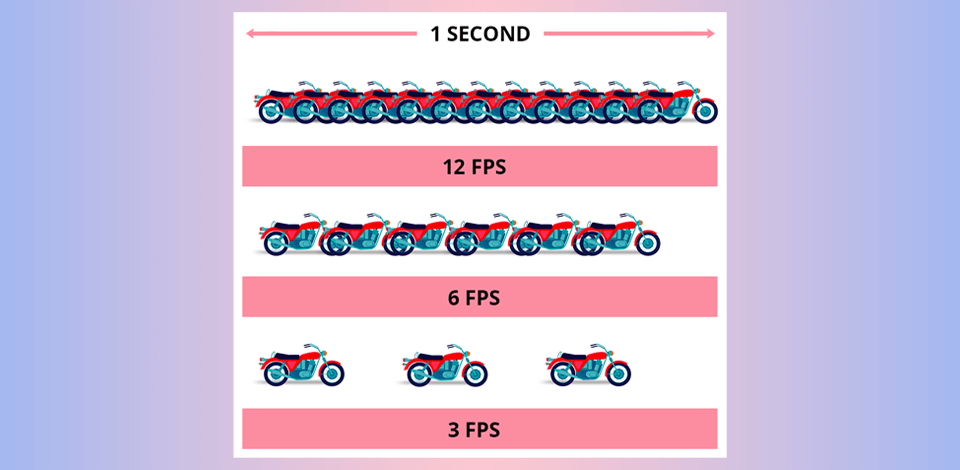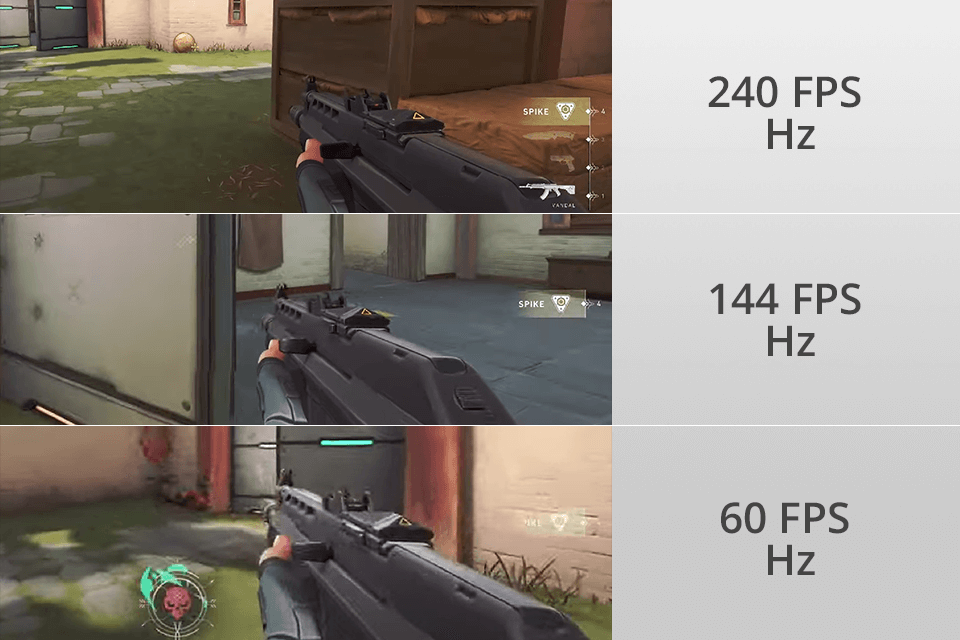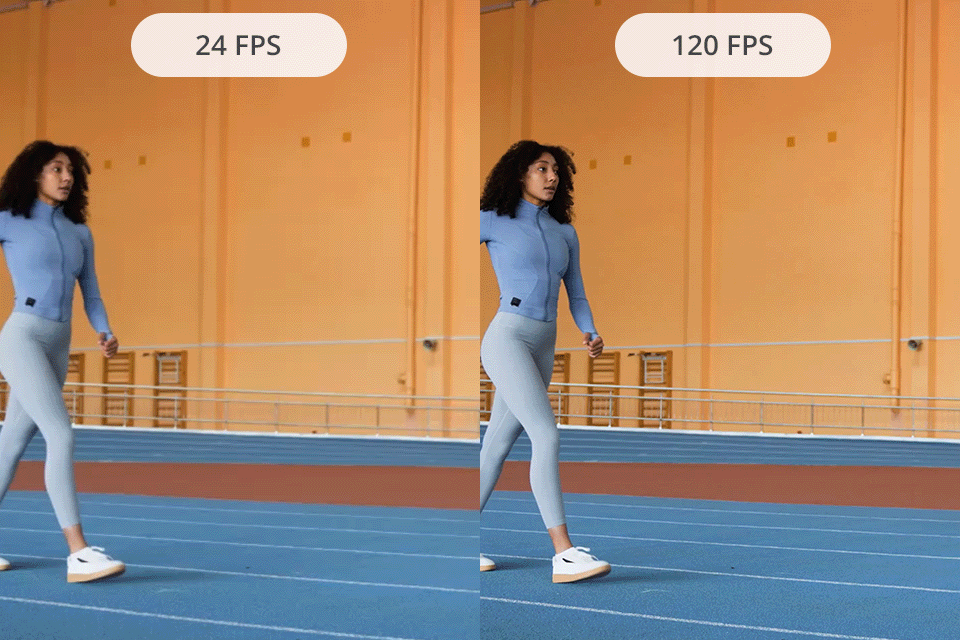
You’ve probably heard people debating how many FPS the human eye can see. There are a lot of wrong ideas out there. Scientists, gamers, and tech enthusiasts all have different answers.
If we understand how our vision works with moving images, we can clear up some of those misunderstandings and see why a higher FPS is useful in certain cases. So, what’s the real limit? It’s not just one number you can point to.

When we talk about how we perceive frames per second (FPS), it’s important to realize that our eyes and brain don’t work like a film camera. Our eyes send a steady flow of visual information to the brain, rather than taking individual snapshots. The brain then puts all that information together to give us the feeling of continuous motion.
Although our eyes’ retina can pick up fast changes in light and movement, our brain is the one that interprets what we see. This is a crucial point for anyone who creates video content and offers video editing services. Therefore, the “FPS” we perceive isn’t a single number. It hinges upon the type of movement, the lighting, and individual differences in how we process information.
To figure out how many FPS the human eye can see, researchers in 2014 did an experiment. They showed people a series of pictures, really fast, and then asked them questions about what they saw. This experiment proved that our brains can recognize a picture even if it’s only on the screen for 13 milliseconds.
Ophthalmologists can use special high-speed cameras to watch the tiny movements inside your eye. By doing so, they can learn how quickly your eyes are moving and working.
Modern smartphones have a slow-motion video feature. It is so powerful that you can actually capture the very small movements of your eyes. This is possible because the phone records many frames per second. The technology constantly improves, and scientists will likely discover new methods to understand the limits of human vision.
There were scientific studies that show that we can see changes much faster than 24 FPS. People managed to spot changes in flashing lights or movement up to 60 FPS in some studies. During extremely fast situations, like a light flickering, our eyes may be able to detect changes at 120 hertz (which is the same as FPS) or even more.
There’s a difference between your eyes seeing individual images and your brain seeing smooth movement. You may be able to detect a quick flash of a picture, but your brain only sees fluid motion up to a certain point. For most people, that point is somewhere between 60 and 120 FPS. The type of thing you’re watching also plays a role.
| Frame rate | Perception & experience |
|---|---|
|
<10Hz
|
Recognized as a set of still images rather than smooth motion
|
|
10-13Hz
|
Optimal range to see how small objects are moving or tracking multiple targets; brain processes in pulses
|
|
20-24Hz
|
Minimum frame rate for perceiving smooth motion (e.g., used in films)
|
|
30Hz
|
Adequate for basic smoothness, but noticeable stuttering compared to higher frame rates
|
|
60Hz
|
Smoother than 30 Hz; works best for casual gaming or general visual tasks
|
|
90Hz
|
Most people won’t notice much difference in how smooth it looks compared to something a little slower
|
|
120Hz
|
People can clearly see that fast motion is much smoother; often preferred for competitive gaming or VR
|
|
180Hz
|
Improvements in smoothness are mainly visible on high-quality displays or while watching extremely fast action
|
|
200+Hz
|
At a certain point, motion on a screen looks so realistic that it’s almost impossible to tell the difference between it and real life
|
For gamers, the question of how many FPS the eyes see is very important. In games, the “FPS” number tells you how smooth the action is. Higher numbers mean smoother gameplay. For example, 60 FPS is much smoother than 30 FPS, and 120 or 240 FPS is even smoother.
This smoothness means you’ll see things more clearly, your controls will feel more responsive, and you can react faster. Such a parameter gives gamers a real advantage, especially in games that require quick reflexes.
Generally, after a certain point, around 60 FPS, things already look pretty fluid. So, while 120 FPS is technically smoother, your eyes may not be able to tell the difference in everyday use.
The following factors impact the FPS number our eyes can see:
Type of motion. When objects move evenly and predictably, we can see them smoothly, even if there aren’t a lot of frames shown each second
Brightness and lighting. The brighter the surroundings, the better our eyes can see motion; thus, we can perceive higher frame rates
Individual differences. Some people can see motion more sharply than others, which means they can perceive higher frame rates more clearly
Screen refresh rates. Using monitors with high refresh rates, like 120Hz or 240Hz, you can see the smoothness of high FPS

It’s easy to see that 60 Hz is smoother than 30 Hz. However, there’s still a debate about whether going even faster makes a noticeable difference to our eyes. Experts have different theories about the maximum frame rate our eyes can detect.
While 60 frames per second is a clear improvement, it’s hard to tell the difference when you go much higher. Experts disagree on where the limit of what we can see is. Some think it’s somewhere between 120 Hz and 180 Hz, or even more. Some believe that 200 FPS looks completely natural, but others think the point where we stop noticing improvements is closer to 90 Hz.
In contrast, studies have shown that our brains process what we see in a kind of “pulse,” about 13 times a second. Scientist Rufin van Rullen has discovered that for tasks like tracking movement, we’re most sensitive in the range of 7 to 13 pulses per second. Anything faster and our brains can’t properly keep up.
We can see the difference between smoother and less smooth motion when a screen shows more pictures per second. However, our brains don’t process each individual picture. Instead, they seem to average many of those pictures. This means that even if a gaming monitor shows you 60 or more frames per second, your brain will “turn” that data into smaller visual pieces.
You have probably seen a spinning wheel in a movie, which seems to go in the reverse direction. This illusion is called the “wagon wheel effect,” and is related to the FPS our eyes can see. Our brains don’t process every single moment of motion perfectly. This happens naturally in our brains, meaning humans have a limit to how fast we can see changes in time or temporal resolution.
Simply put, some experts say that higher frame rates mean more eye-pleasing visuals. However, the real-world advantages reach their limit at roughly 24 frames per second. That’s the same speed that movies are typically shown at.